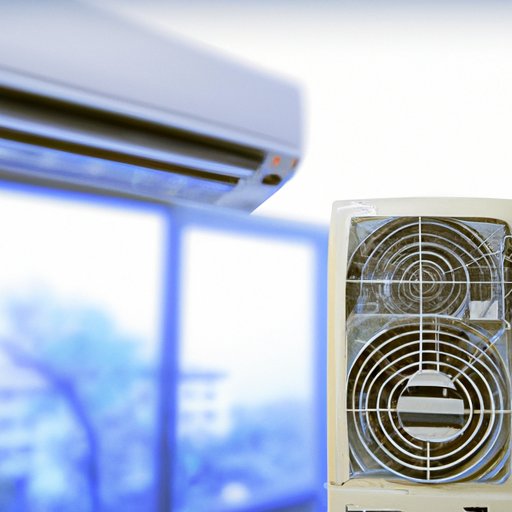Introduction
Air conditioning (AC) is a necessity for many households, especially during the hot summer months. But what does it cost to buy and own an AC system? This article will explore the cost of installing, operating, and maintaining an AC system, as well as the potential benefits of investing in an energy-efficient model.

Researching the Cost of Installing an Air Conditioning Unit
The cost of installing an AC unit depends on several factors, such as the size of the unit, the type of system, and the complexity of the installation. According to HomeAdvisor’s 2019 report, the average cost to install an AC system is around $5,800.
Common components of an AC system include an outdoor condenser unit, an indoor evaporator coil, a thermostat, and ductwork if necessary. The cost of these components can vary greatly depending on the type of system and the brand. For example, a basic central air conditioning system can cost anywhere from $3,000 to $7,000, while a high-end system could cost upwards of $10,000.

Calculating the Cost of Operating an AC System
In addition to the initial installation costs, you should also consider the cost of operating the AC system. Factors that affect the energy consumption of an AC unit include the size of the unit, the age of the unit, the climate, and how often the unit is used. According to Energy Star, the average central air conditioner uses 3,500 watts of electricity per hour.
To calculate the annual operating cost of an AC system, you need to multiply the wattage of the unit by the number of hours it runs each day, then multiply that number by the cost of electricity per kilowatt-hour. For example, if your AC unit uses 3,500 watts of electricity and runs 12 hours per day, and electricity costs 10 cents per kilowatt-hour, the annual operating cost would be $1,260.
Exploring the Benefits of Investing in an Energy-Efficient AC Model
Investing in an energy-efficient AC model can have significant long-term benefits. Energy Star estimates that an energy-efficient model can save up to 30 percent on cooling costs. Additionally, many utility companies provide rebates for purchasing an energy-efficient model, which can help offset the initial cost.
Another benefit of investing in an energy-efficient model is that they tend to last longer than less efficient models. According to a study conducted by the National Renewable Energy Laboratory, energy-efficient AC systems had an average lifespan of 17 years, compared to 14.8 years for non-energy efficient systems.
Examining the Long-Term Costs of Owning an AC Unit
In addition to installation and operating costs, there are other long-term costs associated with owning an AC unit. These include maintenance and repair costs, as well as replacement costs when the unit needs to be replaced. Maintenance and repair costs can vary greatly depending on the type of AC system and the complexity of the repair. Replacement costs will depend on the type of system and the size of the unit.
Comparing Different Types of AC Systems and Their Costs
When it comes to AC systems, there are several different types to choose from. Central AC systems are the most common type of system and typically cost between $3,000 and $10,000. Ductless mini-split systems are becoming increasingly popular due to their energy efficiency and flexibility. They typically cost between $2,000 and $12,000. Window units are the least expensive option, costing between $100 and $600. Portable AC units are a good choice for renters or those who don’t want to invest in a permanent AC system, and they typically cost between $200 and $700.

Exploring Ways to Cut Costs When Buying an AC Unit
There are several ways to cut costs when buying an AC unit. Shopping around for the best price is one way to save money. You can also investigate potential tax credits or rebates that may be available in your area. Finally, investing in an energy-efficient model can save money in the long run, even though the initial cost may be higher.
Conclusion
The cost of buying and owning an AC system can vary greatly depending on the type of system and the complexity of the installation. Researching the cost of installation and operating costs is important when deciding which system to buy. Investing in an energy-efficient model can also save money in the long run, as well as potentially providing other benefits such as increased lifespan and potential tax credits or rebates.
Shopping around for the best price and investigating potential tax credits or rebates can also help reduce the cost of buying an AC system. Ultimately, the cost of an AC system depends on many factors, so it’s important to do research to find the best option for your needs and budget.
(Note: Is this article not meeting your expectations? Do you have knowledge or insights to share? Unlock new opportunities and expand your reach by joining our authors team. Click Registration to join us and share your expertise with our readers.)
